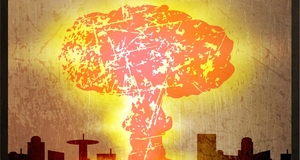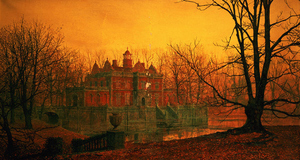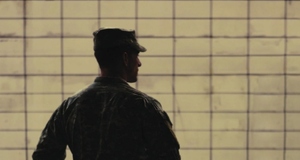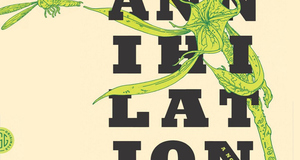Tim O'Brien's The Things They Carried: Postmodern Fiction for a Postmodern War
By
2011, Vol. 3 No. 08 | pg. 1/1
KEYWORDS:
In the western history of human existence the event, idea, and act of war stands totemic in the landscape. Borders both physical and mental have been defined by its threat and execution, and its aura hangs heavily over the last century as the bloodiest in the entire narrative of humanity.1 During a period widely considered to be the most perfect example of the efficient, mechanised destruction of life—the Holocaust—David Rousset gave a name to the experience he saw inside the internment camps as “l’univers concentrationnaire,” a world apart.2 This succinct explanation is at once informative and delimiting, setting up the challenge for all writers that aspire to communicate trauma: how can one communicate when the signifier no longer has a meaningful relationship to what is signified? This crisis of representation is a problem that plagues all that seek to authentically relate the experience of trauma and war in writing. Jameson's famous indictment, “The first terrible postmodern war cannot be told in the traditional paradigms of the war novel or movie,”3 implying the inherent inability of the classic techniques to accurately describe the ambiguities of the Vietnam experience, acts as the starting point for Tim O'Brien's The Things They Carried. Jameson's quote is in reference to Dispatches by Michael Herr, which is regarded as a work of 'New Journalism' by some which “abandons all sense of impersonal objectivity, substituting instead an intense subjectivity”.4 Herr's work can be seen in the same vein as O'Brien's primarily in terms of genre blending (the author calls the work fiction, the New York Times reviewer John Leonard does not) in attempt to create a visceral authenticity unachievable through traditional literary avenues. By virtue of its form and its overarching aim of portraying ‘truth’, The Things They Carried can also be linked, somewhat more nefariously to Jerzy Kosinski's The Painted Bird. Kozinski's novel was purported to be an autobiographical account of his brutal, formative experiences as a Jew of World War II but a media investigation later revealed that the author had “conjured up almost all the pathological episodes he narrates”.5 The consternation and outrage that the investigation provoked on both sides of the debate evoked this response from the author: “I aim at truth, not facts”6. Tim O'Brien's statement that “This is a work of fiction,” (O’Brien, 1990: frontpapers) of course nullifies any direct comparisons between Kozinski's unethical subterfuge and his own artistic innovations, but it is important to note the esteem that the 'truth' and the treatment of it can have in the wider world.“It was like watching a rock fall, or a big sandbag or something – just boom, then down – not like in the movies” (O'Brien, 1990:6) With this concise rejection of the filmic conventions of death we are introduced to one of the main battles that O’Brien is waging with his book: the rejection of the cultural assumptions and conventions that any invocation of war is encumbered with. Before we discuss these conventions in The Things They Carried itself, it is informative to analyse the origins and scope of the conventions of war. “Usually the population is pacifist, just like they were during the First World War. The public sees no reason to get involved in foreign adventures, killing and torture. So you have to whip them up. And to whip them up you need to frighten them.”7 Noam Chomsky’s typically blunt analysis of the necessities required to engage the American population in its first major “foreign adventure” gives us a specific time at which the creation of the modern conventions of war began. The key elements required in gaining public endorsement for prolonged and bloody wars are by “terrifying them and electing jingoistic fanaticism”8; an enemy and a glut of patriotism are the key ingredients. These remarks whilst relevant are about America’s major modern wars – what happens when we posit these ideas into the realm of Vietnam and the postmodern war? These traditional, cultural values of war were inverted for Vietnam: the enemy was not one that threatened American soil, the cause was murky and the public support was polarised between blind patriotism and visceral remorse for the military action. When we place these values into the mysteriously dis-informative world of the media reporting their 'facts' through a shadowy system of misrepresentation, lies and disinformation we see that “For the U.S Military and Government, the Vietnam that they had in effect invented, became fact”9 When the authorities start to collapse the boundaries between history and invention, the very ideas of fact and truth become tarnished with an officially endorsed relativism and ideas of traumatic representation become even harder to distil. One of the most infamous examples of the blurring of invention and fact is the My Lai massacre where the military commended the soldiers for their performance, the newspapers reported on a job well done and 128 civilians were annihilated.10 Our ideas of a terrified population and their jingoistic fanaticism have been convoluted; the simple polarizations have been muddied. This is the background upon which The Things They Carried seeks to complicate and simplify, expose and explicate the assumptions and conventions of war through fiction. We have already hinted at the main thrust of the deconstruction of the book, the binary opposition between truth and fiction. Perhaps one of the most easily assimilated dichotomies; it entails a litany of other inter-related hierarchical preferences: fact is preferable to fiction, truth as reality and fiction as unreality and fact as representative of reality. The effort to subvert these conventions is instantly palpable in the form of the book and its move away from social formal realism. As a form social realism is loaded with the cultural expectancy of reporting the ‘true’ facts, the events as it happened and subsequently the truth of the matter, but this is made inherently impossible by its form “[the realistic novel's] final sense of cohesion offers implicit reassurances that contradictions can be contained within a significantly ordered structure inherent in society”11. The refusal to adhere to the social realist conventions is apparent from the start of the book. Verisimilitude is achieved through the cataloguing of weights both internal and external “Jimmy Cross carried a compass, maps, code books, binoculars, and a 4.5-calibre pistol that weighed 2.9 pounds fully loaded. He carried a strobe light and the responsibility or the lives of his men.” (O’Brien, 1990:6) The listing of the physical items is monotonously long and when combined with the “humping” verb used repeatedly through the passage, the effect is comparative to the tiresome reality of war. Placing the internal responsibility at the end of the list adds a distinct level of gravity to the emotion which is in effect, another concrete item that the lieutenant must bear. Parallel to this refusal to adhere to the conventions that realism implies is the necessity to escape from the cultural bondage that is initiated as soon as the idea of a war story is invoked. “As soon as the word genre is sounded, as soon as it is heard as soon as one attempts to conceive it, a limit is drawn. And when a limit is established, norms and interdictions are not far behind: ”12 In addition to the more obvious terror and jingoism that we previously mentioned, the war story genre is one that is linked to myriad preconceived ideas and aspirations and through these we can detect “an array of typical motifs: the noble example, the test of courage, the battle as initiation...”13 Underlying the belief in these convictions is the desire to place the communal truths of war into a moral that justifies and glorifies the heroic battles that fellow countrymen are dying for on a grand generalized scale; that a level of morality is conscripted into the moral of the story. The moral forced upon war stories is something that O'Brien vehemently rejects. These cultural assumptions have no place in the actual truth of war, “'Hear that quiet, man?' he said. ‘That quiet – just listen. There's your moral.'” (O’Brien, 1990:74) O'Brien's analysis of a true war story goes further than just rejecting the cultural assumptions, but gets inside the hierarchical binary oppositions and exposes truth and fiction for what they are: assumed absolutes based purely on relative perspective. In How to tell a True War Story 'O'Brien' (the character) sets out his belief of what constitutes a true war story: “True war stories do not generalize. They do not indulge in abstraction or analysis...It comes down to gut instinct. A true war story, if truly told, makes the stomach believe.”(O’Brien, 1990:75) This act of belief is not predicated upon the indoctrinated system of truth as fact but relies on a fictive framework to embellish and communicate the central truth, the success of which O’Brien gauges over the course of the chapter. The chapter is framed between the statements “This is true” (O’Brien, 1990:67) and “None of it happened. None of it” (O’Brien, 1990:80), but the communicative success of each story is the aspect that will determine its truth validity, not the faith in the binary. Truth is gained through the mutual understanding of the communicable essence of the story, for Rat Kiley, this truth is the closeness of bond between him and Curt Lemon, but he is unable to convey this truth in the writing to the sister. The sister and Rat belong to such different interpretive communities that what invokes resonance and brotherhood in Rat is treated with the despondency of silence by Curt Lemon's sister; her reply is her silence. This silence evokes Rat’s response – “Jesus Christ, man, I write this beautiful fuckin’ letter, I slave over it, and what happens? The dumb cooze never writes back.” (O’Brien, 1990:68). The sister’s despondency and Rat’s disgust combine to make the reader’s stomach believe. The true scope of the book is also revealed in this chapter as it touches upon some of the flashpoint issues that have plagued the consciousness of the American psyche for generations. The dismantling of “a baby VC water buffalo” (O’Brien, 1990:75) stands as one of the most poignant and inflammatory vignettes in the whole book. The designation of the buffalo as “VC” reminds us of the abhorrent directives that ordained “free-fire zones” where any dead body was counted as enemy14and the buffalo itself also invokes memories of the past genocide inflicted upon the Native Americans. Kiowa, one of the men who dump the dying buffalo into the well, can be seen to represent the entire tribe that was his namesake and subsequently the entire Native American race, the fact that “Vietnam was known collectively as “Indian Country”” gives further credence to this reading.15 The inauspicious end that Kiowa succumbs to when he drowns in a shit field (“He was folded in with the war; he was part of the waste” (O’Brien, 1990:151)) later in the book remarks upon the cyclical and un-ending repetition of wasted life in the grand American tradition of war. The chapter is also notable for containing one of the most problematic references to femininity in the book: “Now and then, when I tell this story, someone will come up to me afterward and say she liked it. It’s always a woman.” (O’Brien, 1990:80) Unlike other instances of femininity in the book such as the Sweetheart of the Song Tra Bong which O’Brien says shows that “men and women are not so different”16 this section resists an easy conciliatory reading. In fact when (the character) O’Brien says “I’ll picture Rat Kiley’s face, his grief and I’ll think, You dumb cooze.” (O’Brien, 1990:80) the reader is viscerally repulsed. This could be seen as a metafictive device, a textual illustration of when “misogyny becomes an integral part of hypermasculinity”17 in the military. This attitude led to shocking events such as “a Donut Dolly (girl of the Red Cross) being stabbed to death and another being blown up with a grenade. By grunts.”18 This “hypermasculinity” and all the negative connotations that it encases is not something that ends with the war (we will shortly discuss issues of structure including closure). The repercussions of the emotive experience such as the soldiers psychological view of the Vietnamese man as a “small-boned and sparse in facial and body hair [who] was a figure simultaneously effeminate and menacing”19 would affect the veterans traditional gender views when they returned home. “You can’t tell where you are, or why you’re there, and the only certainty is overwhelming ambiguity.” (O’Brien, 1990:78) This sense of “overwhelming ambiguity” is principle sentiment of the Vietnam experience. The lack of enemy, direction, trenches and ultimately victory leaves the sense of purpose to be found in the modern war unattainable. O’Brien shows us the antithesis of the grunts disposition in the form of a chequers game between Norman Bowker and Henry Dobbins in Spin: “There was something restful about it, something orderly and reassuring. There were red chequers and black chequers. The playing field was laid out in a strict grid, no tunnels or mountains or jungles. The pieces were out on the board, the enemy was visible, you could watch the tactics unfolding into larger strategies. There was a winner and a loser. There were rules.” (O'Brien, 1990, p.31-2) The rest of the soldiers are magnetised by the board game which holds all of the traditional elements of warfare that the land and objectives of Vietnam deny them in the postmodern war. The chapter Spin is a microcosm of the books overall structural themes; collapsing temporal and literary barriers in mimicry of the nature of memory: “As a result, the stories become epistemological tools, multidimensional windows, through which the war, the world and the ways of telling a war story can be viewed from many different angles and visions.”20 One of the primary elements that are unavailable to the Vietnam soldier and what the onlookers to the chequers game yearn for is closure. Closure is an ending, a full-stop on the proceedings that marks the end of the narrative. The issues of narrative and closure are something that O’Brien consistently tussles with in the text and its existence (or lack of) is tightly wound up with the other conventions of war. O’Brien has said: “Should I not continue to feel guilt and anxiety and a stomach churning sense of shame and remorse? To cease suffering, I think, would be to seep into self deception or the pathology of forgetfulness...the erasures and distortions of reality that we associate with mental illness”21 The cessation of anguish is un-related to the cessation of conflict (notice that in the Vietnamese example we cannot even utter the concept of ‘victory’). In the chapter Speaking of Courage Norman Bowker constantly circles his home town in a repetition of the cyclical dancing of the Vietnamese girl in Style who dances around the wreckage of her family. Both are searching for meaning in lives devastated by the war but neither can gain this illusive closure that is the staple of war stories. So where does the assumption of closure come from? We have to look to American culture for the answers. There are myriad references to acting and general filmic conventions in the book. The most obvious reference is to Bonnie and Clyde in the opening chapter; there are some interesting readings of the film: “The choreographed bloodletting in the finale of Bonnie and Clyde ushered in an age somehow more befitting the carnage in Vietnam and the revelations yet to come, such as My Lai.”22 The carnage that is romanticised for on screen entertainment at home is being played out for real by the soldiers abroad. The depth of narrative conventions goes deeper than conspicuous referencing and permeates every facet of the soldiers’ lives: “They used a hard vocabulary to hide the terrible softness. Greased they'd say. Offed, lit up, zapped while zipping. It wasn't just cruelty, just stage presence. They were actors.” (O'Brien, 1990, p.17) The ideals such as heroism and patriotism which O’Brien eviscerates in certain scenarios are gleaned predominantly from the American culture machine where “The whole world is made to pass through the filter of the culture industry”23 and “…the easier it is today for the illusion to prevail that the outside world is the straightforward continuation of that presented on the screen.”24 There are certain points when the soldiers can no longer conform to the act and it lies in that classically indeterminate ground of traumatic experiences where after the event “As if in slow motion, frame by frame, the world would take on the old logic.”(O’Brien, 1990:16) One of modernity’s dupes; that life is anything like a movie, has just been eloquently deconstructed. The success of The Things They Carried lies in the natural formulation of deconstructive techniques critiquing the naturally held assumptions of a country at war and the underlying principles of perspective subjectivity undergirding them. Wrapped up in a narrative that is engaging, touching, brutal, and yet eminently digestible the central doctrine of the ‘truth’ about ‘Truth’ is one that perfectly reflects the zeitgeist of the Vietnam era. To write of war is to do battle with the convolutions of memory under the stress of exceptional trauma. To write of the postmodern war is to do battle with the cultural edifice of the genre of war too. So often billed as a crisis of representation, Tim O’Brien has achieved a triumph of representation with The Things They Carried. 1.) Margot Norris, Writing War in the Twentieth Century (Virginia: University of Virginia Press, 2000) pxi 2.) Rousset, David l’univers concentrationnaire (London: Secker & Warburg, 1946) Trans. Gutherie, R. (New York: Reynal, 1947) 3.) Frederic Jameson, Postmodernism, or, The Cultural Logic of Late Capitalism (North Carolina: Duke University Press, 1984) p38 4.) Lucas Carpenter, '“It Don't Mean Nothing”: Vietnam War Fiction and Postmodernism', College Literature, Vol. 30, No. 2 (Spring 2002), 30-50 (p.31) 5.) Norman G. Finkelstein, The Holocaust Industry: Reflections on the Exploitation of Jewish Suffering (New York: Verso, 2003) pp55-57 6.) Timothy Garten Ash, 'Truth is another County', The Guardian, 16th November 2002, <http:///www,guardian.co.uk/books/2002/nov/16/fiction.society> [accessed 21st April 2011] 7.) Noam Chomsky, Media Control The Spectacular Achievements of Propaganda (New York: Seven Stories Press, 2002) p.30 8.) Ibid p.13 9.) Steve Kaplan, ‘The Undying Uncertainty of the Narrator in Tim O’Brien’s The Things They Carried, Critique, Vol.35 No. 1 (Fall, 1993) 43-52 (p.43) 10.) Mark Taylor, The Vietnam War in History, Literature and Film (Edinburgh: Edinburgh University Press, 2003) p.116 11.) Christopher Donovan, Postmodern Counternarratives Irony and Audience in the Novels of Paul Auster, Don Delillo, Charles Johnson and Tim O'Brien (New York: Routledge, 2005) p.11 12.) Derrida, Jacques and Ronell, Avital The Law of Genre in Critical Inquiry Vol.7 No.1 (Autumn, 1980) p56 13.) Wesley, Marilyn Truth and Fiction in Tim O'Brien's “If I Die in a Combat Zone” and “The Things They Carried” in College Literature Vol.29 No.2 (Spring, 2002) p2 14.) Spencer Tucker, Vietnam (Kentucky: University of Kentucky Press:1999) p.132 15.) Brian Jarvis, ‘Skating on a shit field Tim O’Brien and the topography of trauma’ in American Fiction of the 1990’s Reflections of history and culture ed. by Jay Prosser (Oxford: Routledge, 2008) p.139 16.) Tim O’Brien, ‘Two Heads and the Things They Carried with Tim O’Brien’ in Literature and Medicine, ‘Afershock: Humanities Perspectives on Trauma’ (November, 2010) 17.) Katarzyna Szmigiero, ‘The changing face of war neurosis: shell-shock and Vietnam war syndrome’ in Participations and Assessment (Lodz: SWSPiz Department of English, 2009) pp.39-48, p.45 18.) John Pilger, Vietnam: The Quiet Mutiny (ATV Network Limited Production:1970) 22:11 19.) Philip K. Jason, Acts and shadows: the Vietnam War in American literary culture (Maryland: Rowman & Littlefield Publisher, 2000) p.30 20.) Calloway, Catherine, 'How to tell a true war story': Metafiction in 'The Things They Carried.' In Critique: Studies in Contemporary Fiction pp. 249-257 p.249-250 21.) Tim O’Brien, ‘Two Heads and the Things They Carried with Tim O’Brien’ in Literature and Medicine, ‘Afershock: Humanities Perspectives on Trauma’ (November, 2010) 22.) Jeremy M. Devine, Vietnam at 24 frames a second: a critical and thematic analysis of over 400 films about the Vietnam war (Texas: University of Texas Press, 1999) p.56 23.) Theodor Adorno and Max Horkheimerv, ‘The Culture Industry: Enlightenment as Mass Deception’ originally in Dialektik der Aufklärung: philosophische Fragmente (1944) p.30 24.) Ibid. P.33 Suggested Reading from Inquiries Journal
Inquiries Journal provides undergraduate and graduate students around the world a platform for the wide dissemination of academic work over a range of core disciplines. Representing the work of students from hundreds of institutions around the globe, Inquiries Journal's large database of academic articles is completely free. Learn more | Blog | Submit Latest in Literature |


















